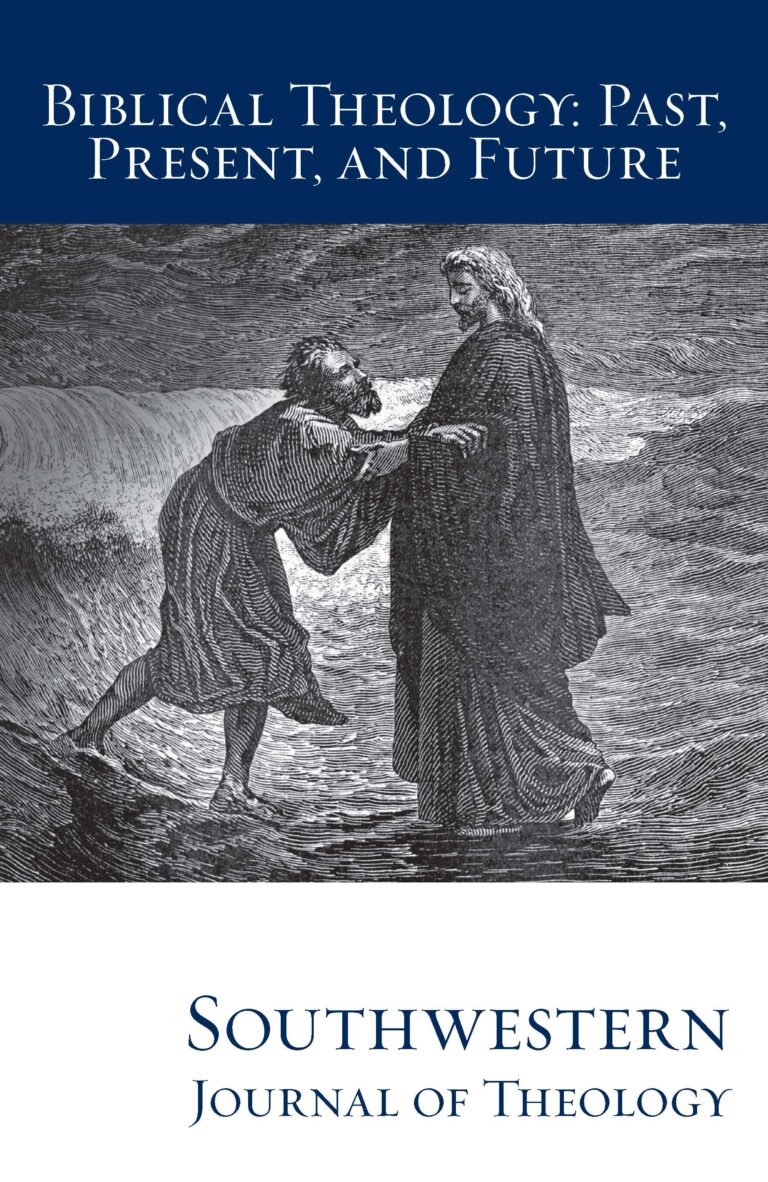
Biblical Theology: Past, Present, and Future (II)
Southwestern Journal of Theology
Volume 56, No. 1 – Fall 2013
Managing Editor: Terry L. Wilder
By Julie Canlis. Grand Rapids: Eerdmans, 2010. 286 pages. Softcover, $32.00.
Julie Canlis’ book, Calvin’s Ladder offers a new interpretation of the oft-ignored aspect of ascent in Calvin’s theology. She assigns the theme an explanatory power greater than its role in Calvin’s eucharistic theology (112-13). In the doctrine of spiritual ascent and the communion/participation with Christ to which the ascent leads, Canlis find a nuanced understanding of several other elements of Calvin’s theology, especially Calvin’s Christology and soteriology.
Canlis traces ascent theologies from Plato through Christian appropriations and rejections of that starting point (chap 1). Last on the itinerary, to borrow Canlis’ metaphor, was Calvin’s ascension theology, which, while retaining souvenirs of previous thinkers, had a different foundation. For Calvin, ascent was not a way to participate in an impersonal ontological divinity as for the Platonists but rather the means of ascent toward participation with the person of Jesus Christ (50).
Calvin understood creation in light of participation. In Canlis’ perspective, Calvin wove Christ into the pattern of creation (71). By the Fall, therefore, mankind lost participation with Christ in creation (83-87). The way for Calvin’s Christology is thus paved, for Christ restores that lost communion. Christ’s mission not only rescues and appeases but more fundamentally it is the movement of Trinitarian love toward sinners bringing the lost back into communion with that love (92). The pneumatological implication is that the presence of the descended Spirit after Christ’s ascension is the historical means of present communion until an eschatologically fulfilled communion is realized (117-18).
Canlis later describes the state of communion in the life of the believer. It is the Spirit who binds the believer in participation with Trinity in accordance with the imagery of adoption (148). The role of the eucharist in this is important. Calvin’s doctrine was not developed simply as his contribution to the controversy of his day but rather the fullest expression of his doctrine of participation (161). In Canlis’ participatory interpretation of Calvin’s theology, the eucharist is not just a glimpse of ascent but rather that ascent seen in full exposure.
Canlis portrays the participatory theology of Irenaeus, providing an in depth treatment beyond mere comparison with Calvin’s theology. She recognizes several differences, including Irenaeus’ anthropological and Calvin’s Christological starting points (230). Her understanding is generally more sympathetic toward Irenaeus, saying that his theology could act as a corrective to Calvin’s (233). She fears that Calvin’s participatory theology led to undesirable implications such as penal atonement, depravity, and moralism (243). This provides a starting point for a discussion of the value of these theologies for contemporary theological development.
One must be aware of Canlis’ use of certain terms. The work stresses the concepts of ascent and participation–the former being the means of attaining the latter. She uses participation and communion (and less often union or presence) synonymously, or so it seems at first. She has a difference in mind to the point that she could say, “participation is nuanced with communion” (60). She says that all the terminology overlap in meaning but even then after having said that communion was the fruit of participation (14). What exactly the difference is unfortunately is not made clear from the beginning in any concise definitional form, leaving readers to discover for themselves the difference as they read. It would have been beneficial to have taken a moment to distinguish these ideas at the outset in order to avoid any confusion in attempts to locate what must be a very fine line between the terms.
Generally, Canlis avoids the temptation to exalt the subject of her study to become the dominant or central theme of Calvin’s theology. Rather, she hopes to bring into the open a significant trait others have often overlooked as, for instance, typified in his doctrine of adoption (131). Canlis still somewhat tends to see the doctrine above other theological characteristics. She criticizes Torrance’s description of Calvin’s mirror metaphor for not giving place to participation (80-81). She also thinks that the Spirit as bond of communion was significant enough that she finds it odd that the title of Book III of the Institutes did not include the Spirit (148). Additionally, although the ladder image is not foreign to Calvin’s writings, Calvin himself did not use it broadly as Canlis does as a metaphor for ascent. The ladder as a unifying image for Canlis gains weight from Plato’s initial usage in the Symposium.
Most admirably, Canlis’ work does the work of a church historian with proper purpose. She does not forget that her effort is in service to the church and she believes that Calvin has something to say today (24), especially within her own Reformed tradition, which tends to play down such participation (13). As such, Calvin’s Ladder gives the church a tool for crafting its own theology by rediscovering the communion and ascent that Calvin felt was so vital to the Christian life.





